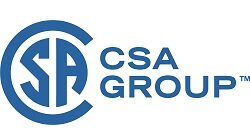More than six million Canadians live with a disability¹. In everyday life, they may have fewer options when accessing transportation services, communicating with others, or maximizing mobility in indoor spaces. Accessibility is generally recognized as an important element of architectural design practice², and incorporating accessibility principles helps ensure that people with disabilities can have the same experience as any other person, whether in a public venue or at home.
Over the past two decades, municipalities, provinces, and territories across the country have developed various policies aimed at improving accessibility in public buildings and spaces, as well as for dwellings. CSA Group standards solutions support these efforts, helping Canada reach its goal of becoming a barrier-free country by 2040.
Standards help improve access to public and private spaces
The first CSA Group accessibility standard CSA B651 was published in 1990 under the title Barrier-free design (now published as CSA/ASC B651, Accessible design for the built environment). It brought requirements that were considered extraordinary at the time. Features such as ramps at main entrances, wider doors, handrail extensions, and expanded washroom stalls help improve overall access to public and private spaces for people with disabilities.
Since its first edition, the standard has evolved significantly. For example, subsequent updates added enhanced guidance on elements serving mobility, reaching, manipulation, hearing, visual, and other spatial needs for people with a range of physical, sensory, or cognitive disabilities.
People with lived experience bring their perspectives to the table
Many of the requirements and recommendations of the CSA B651 standard resulted from consultations with people living with disabilities, to incorporate their perspectives and experiences. Their input was included in the 2023 edition of the standard, developed in collaboration with Accessibility Standards Canada (ASC).
The 2023 edition of the standard also embraced the latest anthropometric research, providing more details on the anthropometrics of mobility aid users, including reach ranges for a person in a wheeled mobility device, walkway width for people using crutches, walkers, or being accompanied by a service animal, as well as detection space for people using a long white cane.
Other updates relate to luminance (colour) contrast for general surfaces, glossy or shiny surfaces such as brushed stainless steel, and functional and cognitive barriers. The standard recommends designing spaces with simple, logical layouts and consistent features. For example, washrooms should be located in the same area on each floor.
Designers should also consider measures to improve lighting inside and outside of the buildings, implementing features to reduce noise interferences.
A new standard addresses the accessible design of dwellings
People living with disabilities have specific needs for the places where they live, including easy access to basic human needs such as food, hygiene, and rest areas. However, most Canadian dwellings were never designed with accessibility in mind. Current design and construction guidelines and codes for accessible dwellings vary across the country, and their requirements tend to be limited.
The new CSA Group standard CSA/ASC B652:23, Accessible dwellings, aims to address this challenge. It provides requirements and recommendations for the design, construction, and alteration of dwellings so they can better accommodate the needs of their occupants. The standard can be applied to a variety of dwellings, including detached houses and duplexes, townhouses, row houses, apartments, and condominiums. Its provisions are also suitable for short-term and visitable dwellings, such as hotels, dormitories, and care facilities.
The first edition of the Standard leans on industry experts and people with lived experiences for evidence-informed guidance and best practices on how to design various elements of accessible dwellings. This includes area allowances to accommodate a person using an assistive mobility device, position operability, functionality of handles, locks, light switches, and other home operating controls, access ramps, parking, garages, landscaping, and other exterior elements.
The standard also provides requirements for floors and ground surfaces, with additional considerations for people with different disabilities. For example, people with limited vision, environmental intolerances, or those using assistive mobility devices.
An interactive tool helps designers and builders apply the standard for accessible dwellings
To help home builders, contractors, and accessibility consultants apply the requirements and recommendations of the standard CSA/ASC B652:23, CSA Group, with support from Accessibility Standards Canada, has developed a new interactive pdf tool.
This tool helps assess the needs of individuals with physical, sensory, or cognitive disabilities and optimizes the design of private dwellings, whether building a new house or renovating and retrofitting an existing one. Users can select a specific area of the dwelling and get a quick summary of requirements, recommendations, and considerations that may impact and improve its accessibility.
Research identifies areas where standards can help improve accessibility
Accessibility standards will continue to play an important and necessary role in building a barrier-free Canada. CSA Group research A Canadian Roadmap for Accessibility Standards reviewed the current standardization landscape and identified areas where new standards and harmonization of accessibility provisions across Canada would help remove existing barriers to accessibility.
Recommendations include the development of a comprehensive national standard for accessible indoor and outdoor recreational and green spaces, addressing the physical, sensory, and cognitive needs of their users, along with standards for wayfinding and navigation systems, especially in complex environments within transportation facilities, health care settings, and public pedestrian spaces.
To learn more about CSA Group’s standards and research for building a barrier-free Canada, visit our website at csagroup.org/StandardsForAccessibility.

¹ Canadian Survey on Disability Report, Statistics Canada, 2018
² Zallio, M., Clarkson, P.J., Inclusion, diversity, equity and accessibility in the built environment: A study of architectural design practice, Building and Environment, Vol.206, 2021
CSA Group always strives to provide up-to-date and accurate information. However, no representation or warranty, expressed or implied, is made that this information meets your specific needs, and any reliance on this information is at your own risk. Please contact CSA Group for more information about our services.
©2023 Canadian Standards Association. All rights reserved.






